World’s biggest amulet market: why Thais wear so many good luck charms, and why some cost so much
- US$1.25 billion worth of Buddhist charms are sold every year in Thailand – not surprising when seven in 10 Thais wear amulets. Some have thousands
- The most prized ones were made by venerated monks, but many are mass-produced, and unscrupulous temples pass off fakes as valuable charms to Chinese tourists
His clothes old and frayed, Kob Ladkrabang, a Thai amulet enthusiast, looks for a new acquisition at a Bangkok amulet market to add to his collection of 10,000. “I like amulets,” he says. Photo: Tibor Krausz
Jitti Kongsupapsiri reaches into his breast pocket and takes out a small, off-white object. It is encased in a shiny gold locket with curved glass panes on the front and back.
“Take a look at this,” the Chinese-Thai trader urges as he cradles the amulet gingerly in his palm, as if his very touch posed a danger to it.
Jitti is in a hole-in-the-wall shop at the labyrinthine Tha Prachan amulet market in the oldest part of
, near a bustling pier on the Chao Phraya River. He’s about to offer a glimpse into the strange world of Thai amulets.
There are good luck charms as far as the eye can see, and medallions, pendants and Buddhist trinkets. They are for sale at rickety stands, wobbly stalls and stuffy old shops, laid out in neat rows or jumbled up in plastic baskets.
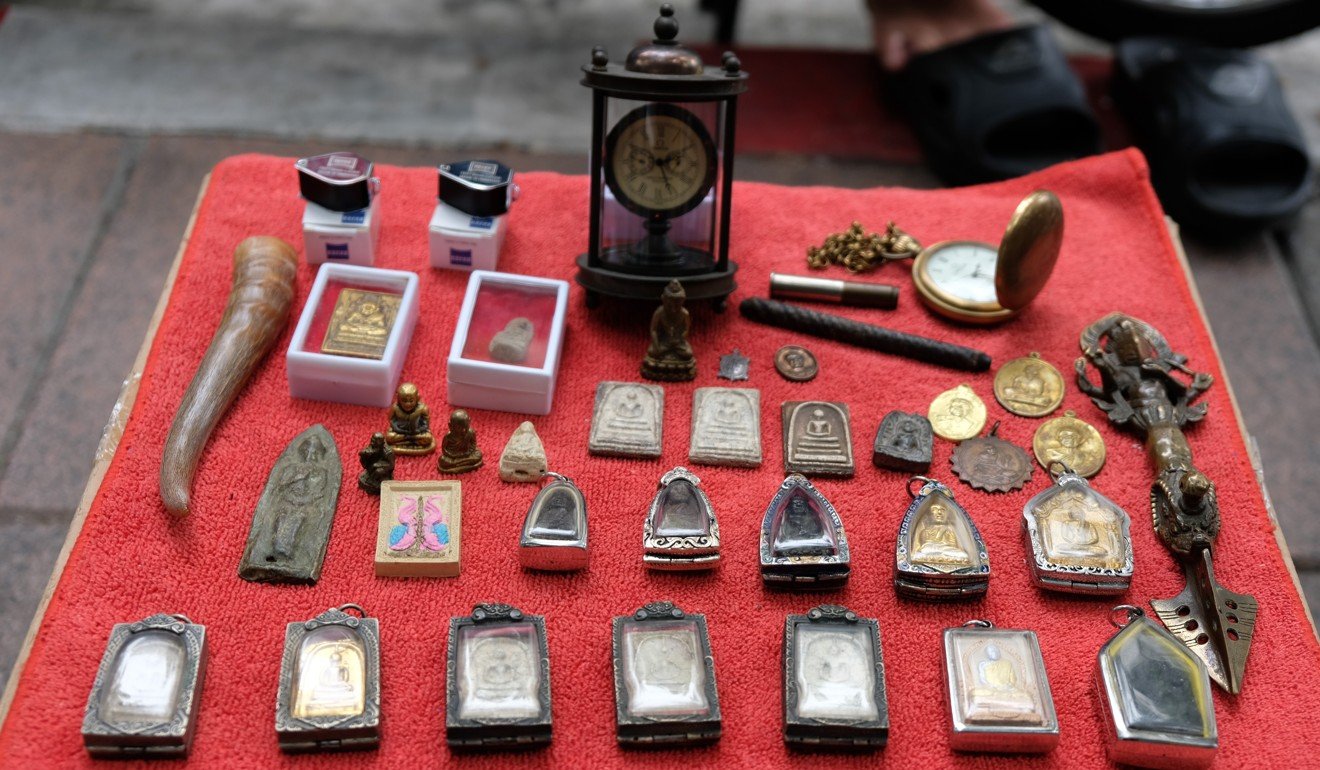
Amulets for sale at a Bangkok amulet market. Some, like these, are laid out in neat rows, others are jumbled together. Photo: Tibor Krausz
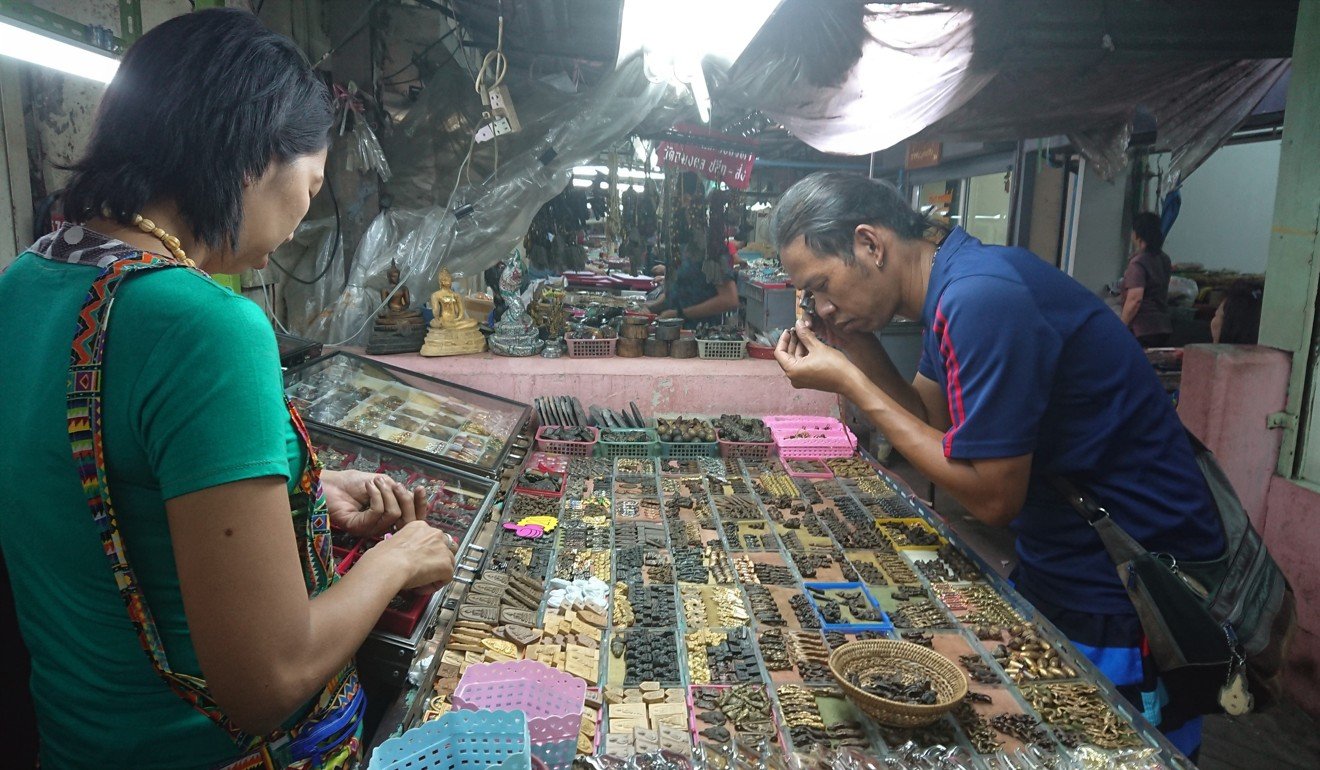
A customer inspects an amulet for sale at a Bangkok market. Even a mass-produced amulet demands close inspection before a purchase is made. Photo: Tibor Krausz
The amulets come in a variety of sizes: little-finger size, thumb size, palm size. They are round, triangular, rectangular, oval. And they come in a range of materials: plastic, ceramic, base metals, silver, gold, jade. Some are limited-edition; most have been mass-produced for sale by enterprising Thais or financially astute Buddhist monks.
They all have one thing in common: they bear stylised depictions of the Buddha or venerated monks. This feature is said to give them spiritual and magical properties.
Prospective buyers stand around stalls, bending over at the waist to peer intently at the offerings with inquisitive zeal. Once an item has caught their eye, they lift it up and proceed to inspect it through a plastic jeweller’s loupe.
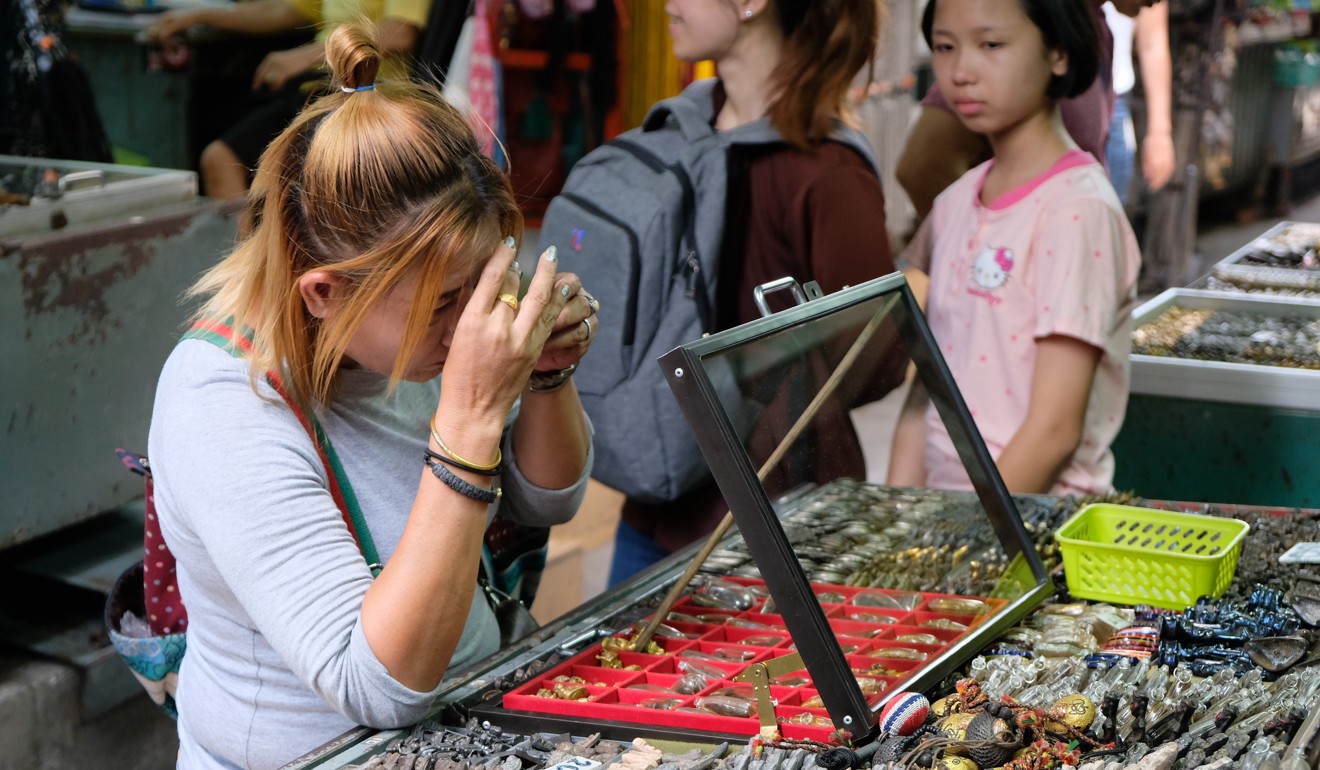
A woman examines an amulet for sale. Seven in 10 Thais wear amulets – some wear dozens at a time. Photo: Tibor Krausz
They may spend minutes studying a single item even if there are numerous identical, factory-made copies of it around. Acquiring a new amulet without first examining it closely seems to be a no-no.
According to a recent poll, some 70 per cent of Thais wear Buddhist amulets to fortify themselves against the slings and arrows of capricious fortune. The country’s amulet market is the largest in the world, with estimated annual sales of 40 billion baht (US$1.26 billion).
“We’re
. We believe in amulets,” Jitti says.
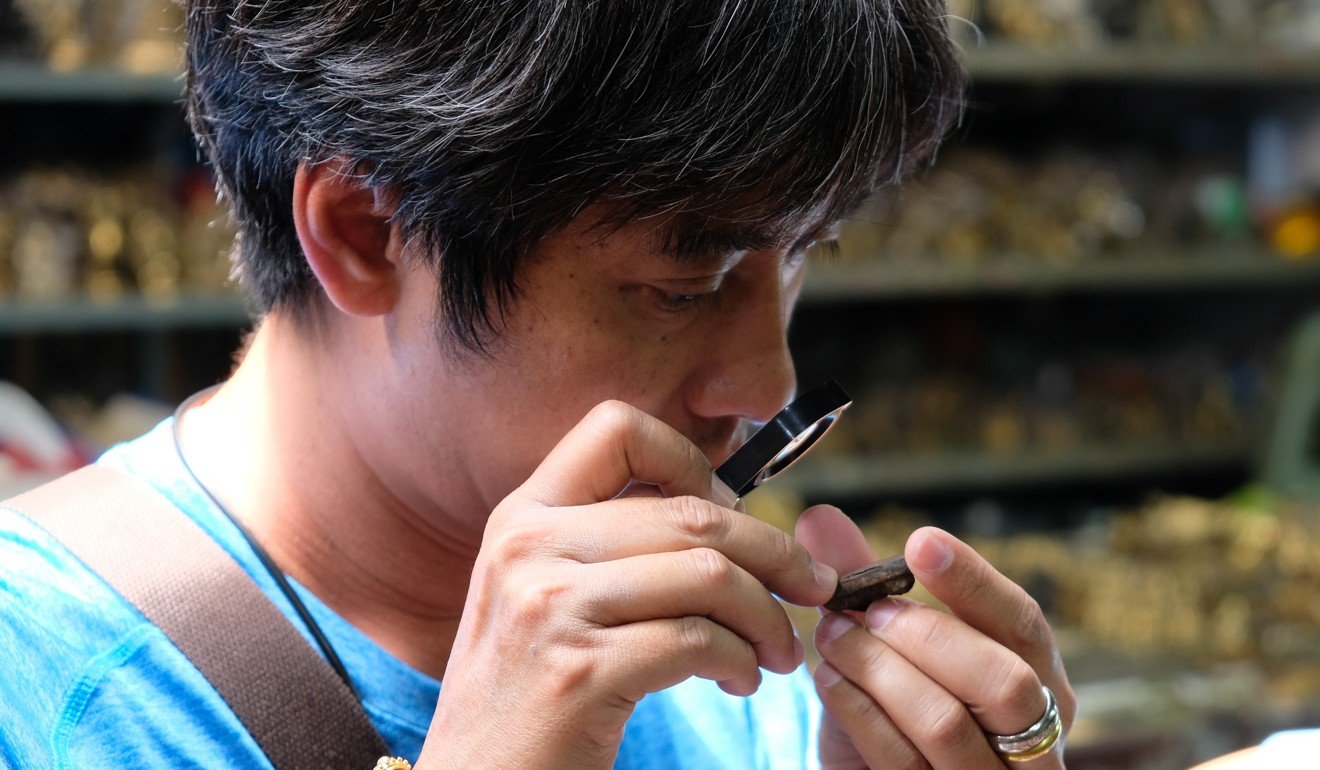
A customer scrutinises an amulet using a jeweller’s loupe at a Bangkok amulet market. Photo: Tibor Krausz
A bespectacled, avuncular man in his 60s, he once lived in the United States and speaks fluent English. He could be mistaken for a college professor.
Jitti indicates a collection of amulets on offer in a display case. “Some of these are quite valuable, some are not,” he observes. “Many of them cost only a few hundred baht.”
Not so the amulet he’s holding in his hand. It costs a lot more than that: its asking price is 15 million baht. “Half a million US dollars,” Jitti repeats, sensing my surprise. “It’s the king of amulets,” he adds.
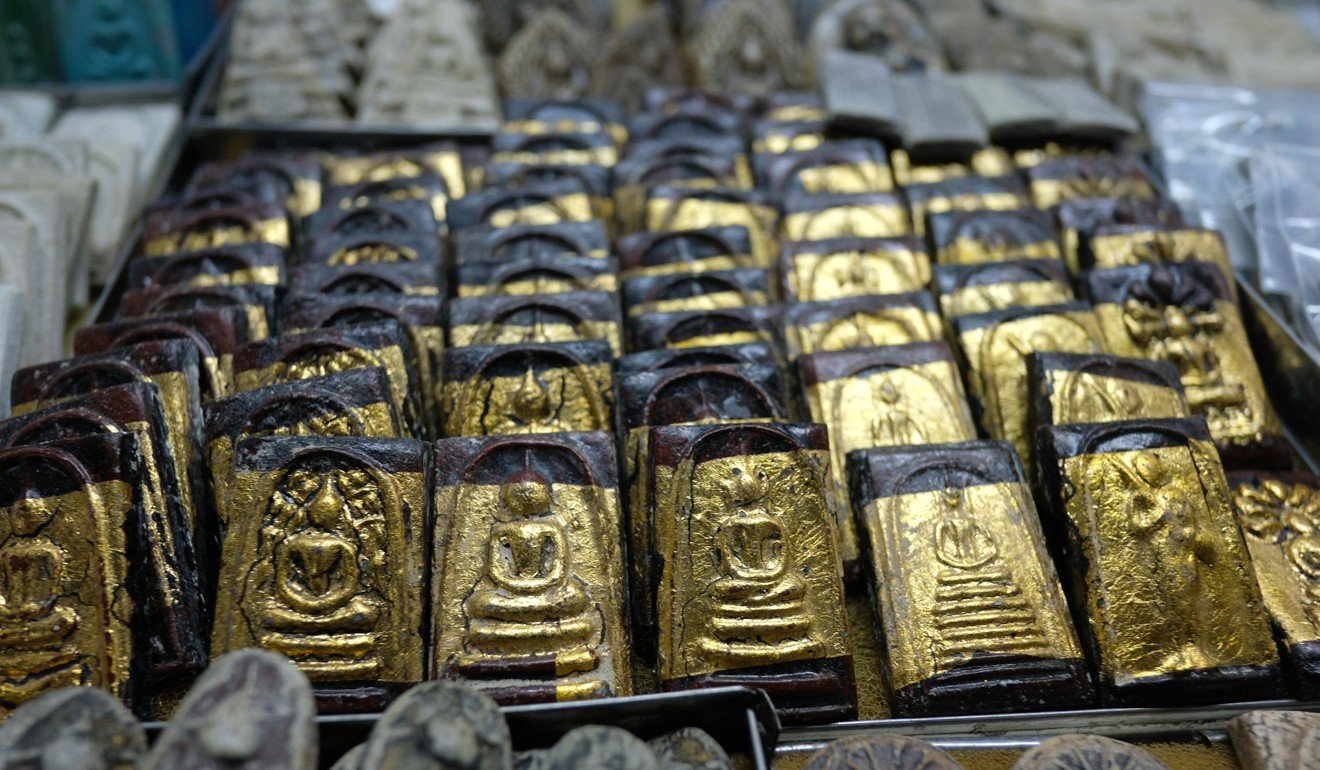
Buddhist amulets for sale. Thais and tourists spend more than US$1.2 billion a year on them. Photo: Tibor Krausz
The amulet may not strike the uninitiated as particularly valuable. It’s a small, chalky tablet, the size of a matchbox but only half as thick. It bears an embossed outline of the Buddha meditating atop a tiered throne inside what seems to be an arched doorway.
Age and provenance make this item so expensive. The amulet dates from the mid-19th century and was reportedly made by Phra Somdej To. A century and a half after his death, the Buddhist monk is revered by Thais as a patron saint and images of him are ubiquitous.
“Appreciating amulets is like appreciating artworks,” Jitti says. “A painting by Van Gogh is far more valuable than a painting by an unknown artist. The same goes for amulets. Which monk made it when and where matters a lot.”
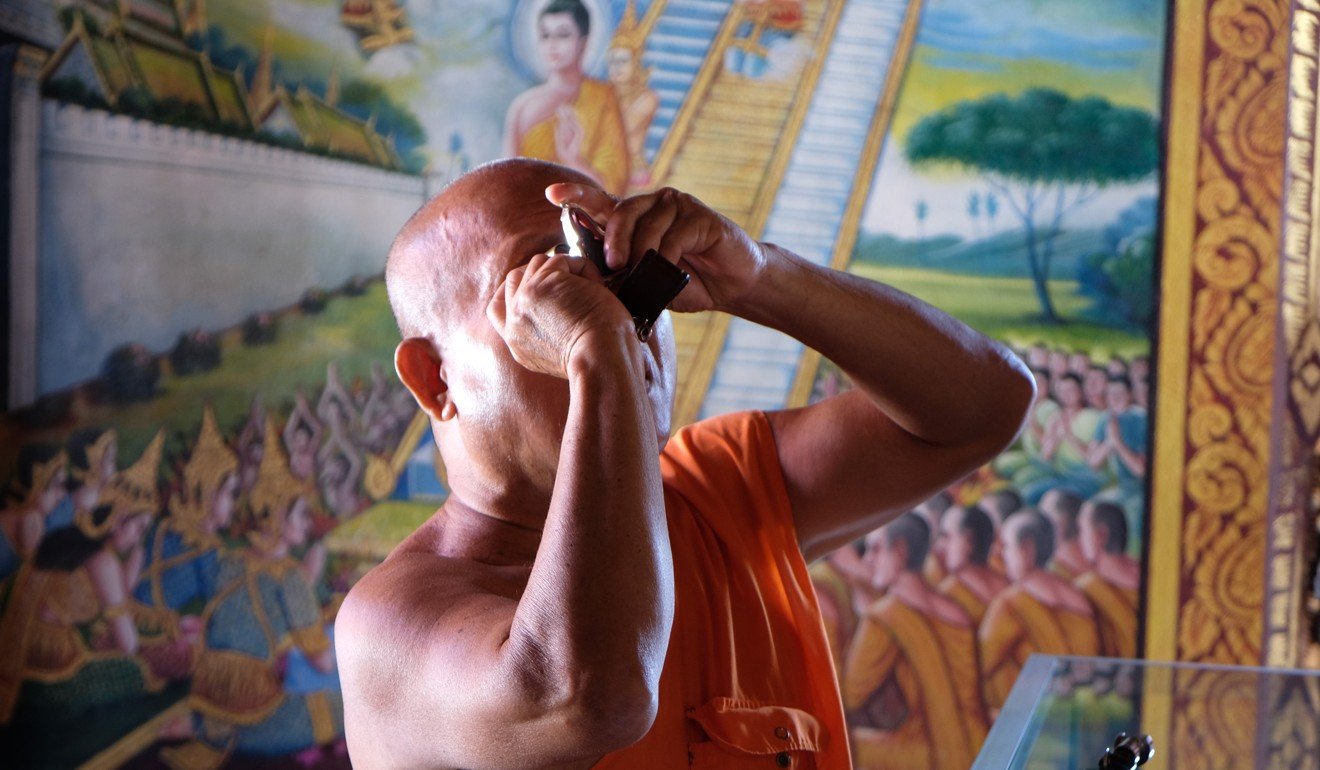
A Buddhist monk inspects an amulet at a temple in Bangkok. Palming off worthless fakes on unsuspecting customers has become a common scam at some Buddhist temples. Photo: Tibor Krausz
Somdej was a son of King Rama I, the founder of the current Chakri dynasty, and became a trusted adviser to King Mongkut, or Rama IV, who was played as a mercurial monarch by Yul Brynner in the 1956 Hollywood epic The King and I. The monk was said to possess magical powers with which he could pacify vengeful ghosts.
During his lifetime the monk’s royally endowed temple, which still stands on the opposite riverbank near the old amulet market, made numerous charms for his followers to protect themselves and remind them of his teachings. His amulets remain popular with Thais from all walks of life.
Replicas of them have been proliferating. Some copies are so expertly made that spotting them requires a well-trained eye. Telltale signs include minute details such as natural decay in a material.
When it’s time for you to go, not even a potent amulet can save you
“You can make a copy, but it won’t look exactly the same,” Jitti says. “When I see you and your twin brother, you may look alike, but after looking more closely I can still tell you two apart.”
Palming off worthless fakes on unsuspecting customers has become a common scam at some Buddhist temples. Chinese tourists who have been flocking to Thailand are a particular target. They may be lured into shelling out minor fortunes for cheap baubles passed off as valuable antiques.
“You have to be careful with forgeries,” stresses Wor Thaprachan, an electrical engineer turned amulet seller. “If you don’t know much about amulets, you can be easily tricked.”
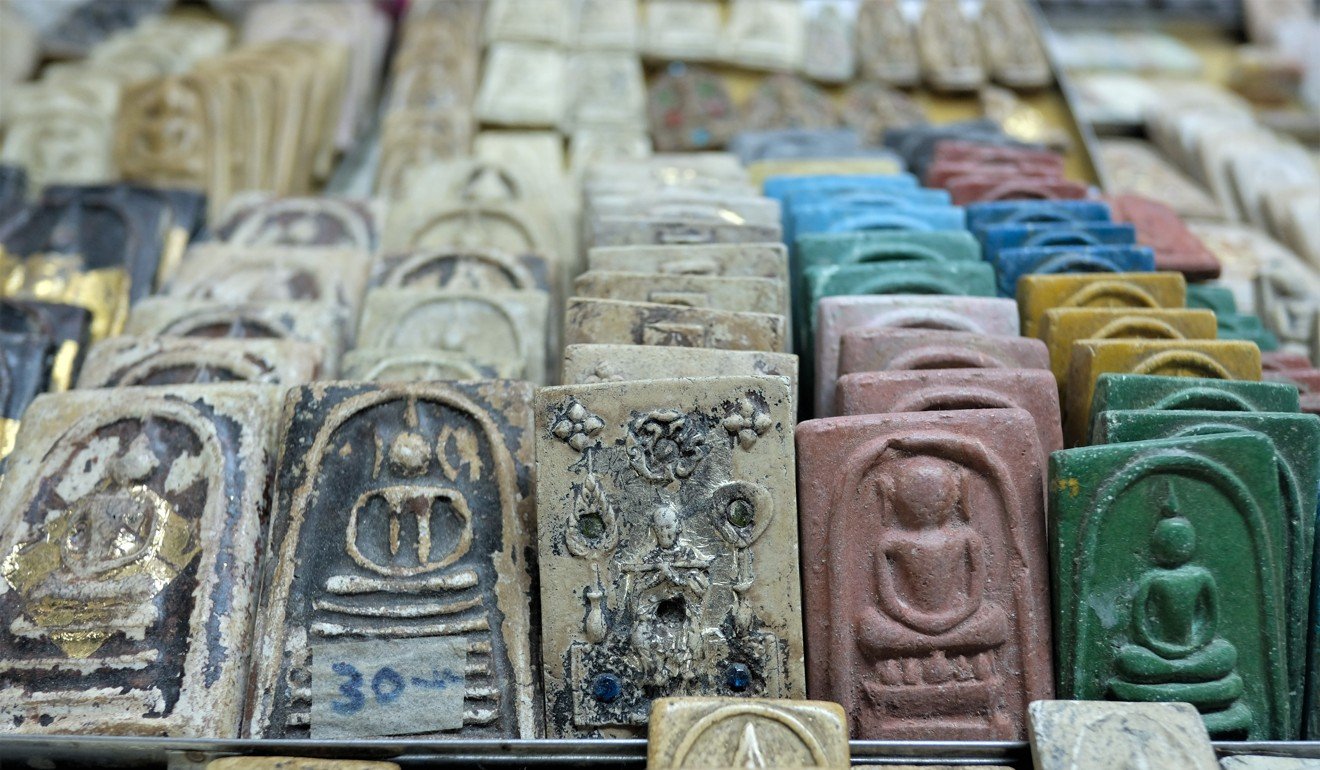
Buddhist amulets for sale at a price of 30 baht (US$1). “Ultimately an amulet sells for what someone is willing to pay for it,” says a dealer. Photo: Tibor Krausz
The prices of genuine amulets vary depending on supply and demand and their presumed potency.
The Phra Somdej amulet that Jitti has for sale is a highly prized specimen. It’s made of porous limestone mixed with rice powder. Some aficionados claim amulets like this may contain the ashes of cremated monks, their hair, or ground-up jasmine petals from phuang malai floral garlands, which are widely used as votive offerings.
A nearly identical amulet was bought for an exorbitant sum.
, the late Thai-Chinese billionaire who owned the English Premier League soccer club Leicester City, paid an eye-watering 100 million baht (US$3.2 million) for it, amulet merchants say. It’s believed to have been the priciest amulet ever sold in Thailand.
“Ultimately an amulet sells for what someone is willing to pay for it,” says Suthi Utanworapot, an “amulet master” who has been buying and selling the charms for three decades. “Its true worth comes from how much you personally value it.”
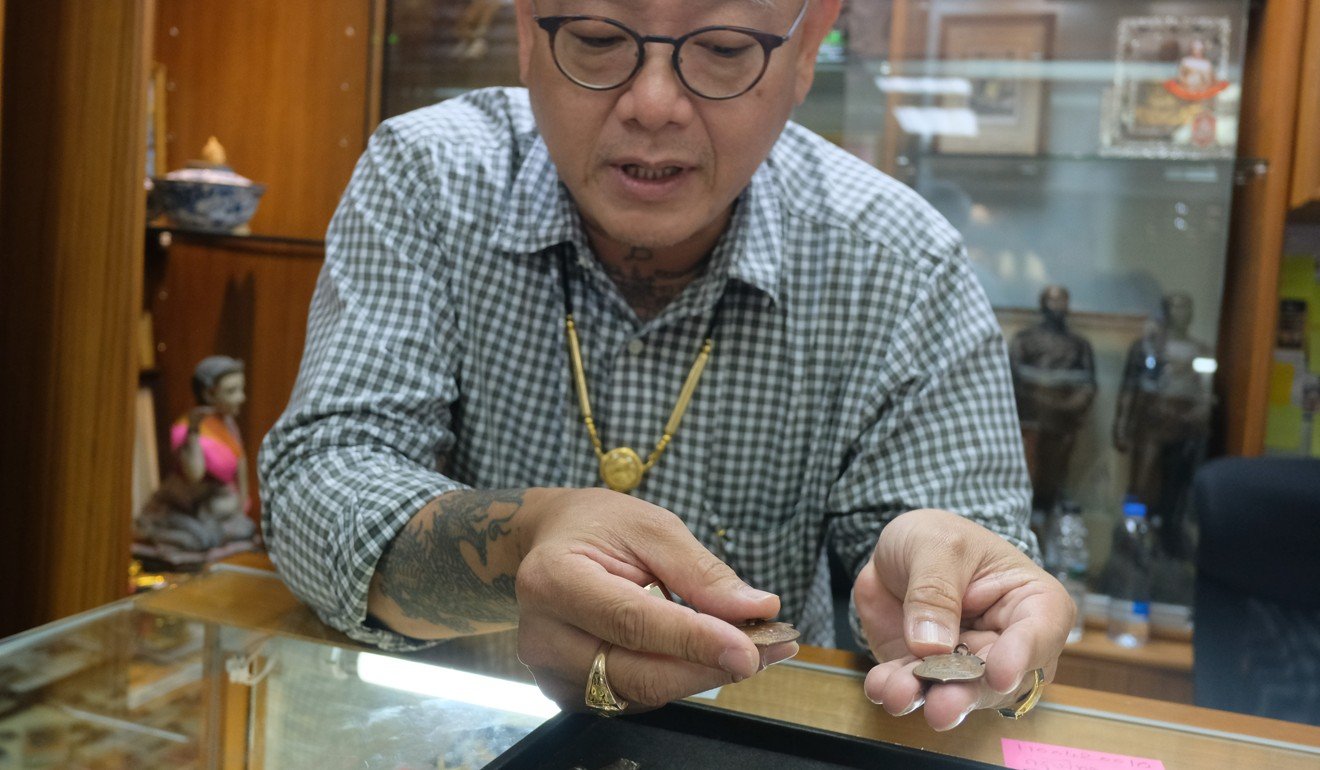
“Amulet master” Suthi Utanworapot shows off some special amulets in his shop at a Bangkok amulet market. Photo: Tibor Krausz
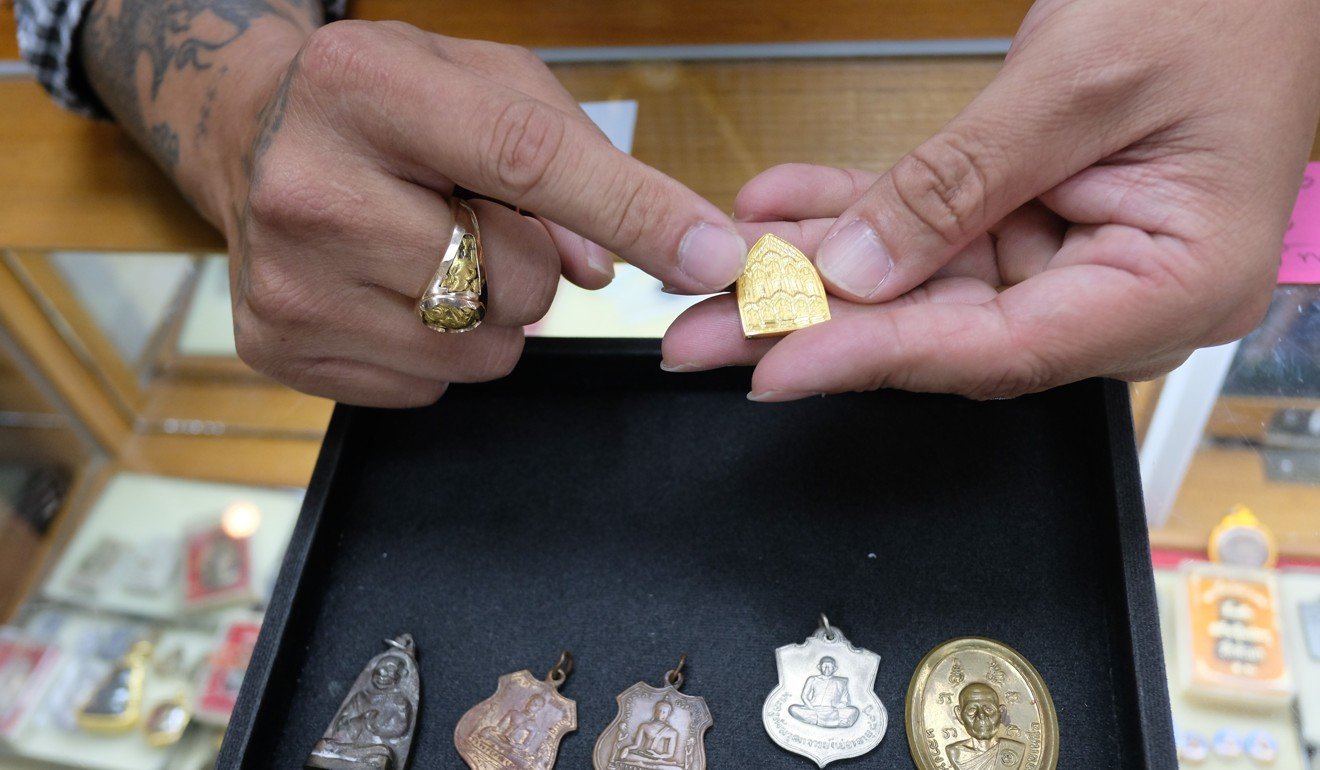
Suthi Utanworapot shows off prized amulets he has for sale. Photo: Tibor Krausz
Phra Somdej amulets are especially valued because they’re believed to bestow several benefits on their owners: wealth, health, good fortune, social success and karmic merit. They’re also assumed to protect their wearers from physical harm, including road accidents.
“People surviving accidents while wearing certain amulets – that’s proof the amulets work,” says Suthi, who is covered in magical tattoos up to his neck, around which he wears several charms on a chain. “I’ve been involved in a few car accidents and I’ve always escaped unharmed,” he adds.
Some amulets can even protect their owners against knives and bullets, Suthi says. He shows an old bullet-shaped object with the image of a Buddhist monk carved into it. “Some criminals escaped many times with their lives after being shot because they wore amulets like this,” he says.
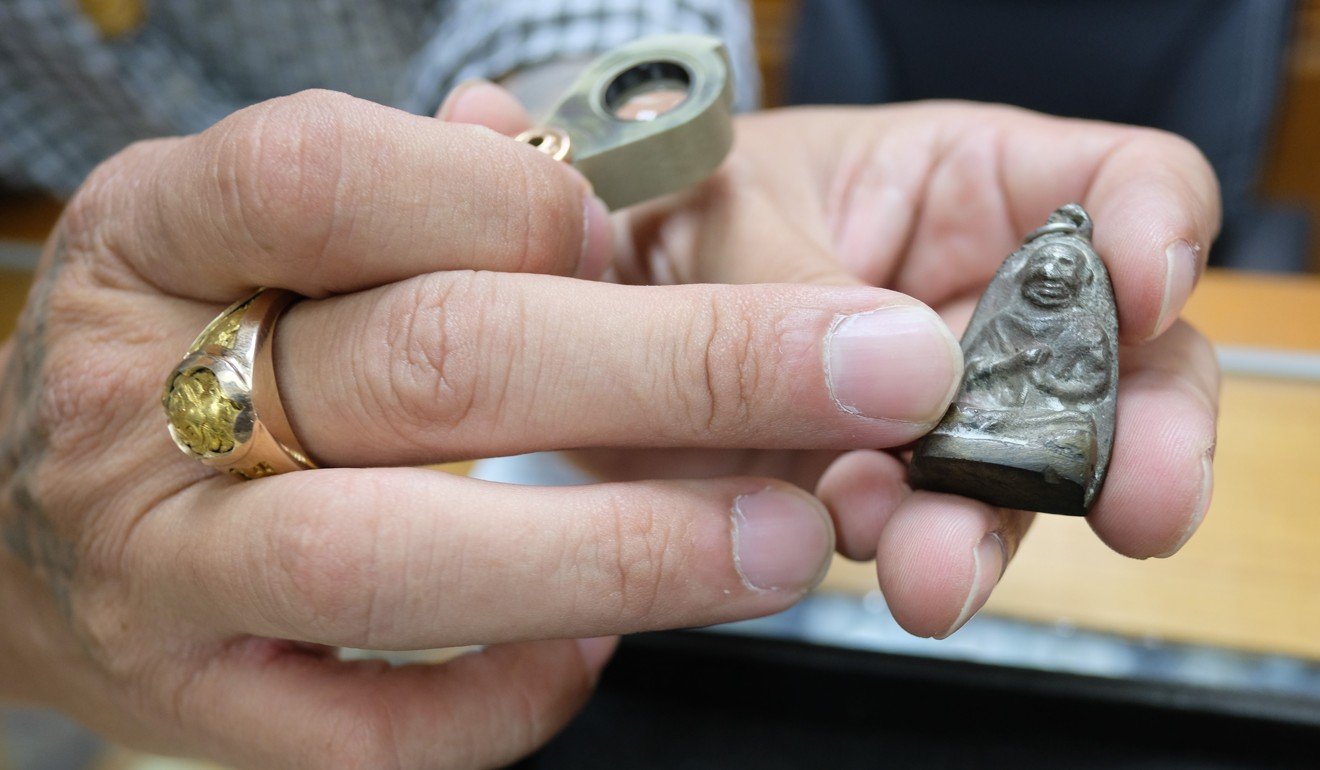
An amulet that is supposed to protect its wearer against bullets. Photo: Tibor Krausz
What about Vichai’s amulet, though? It may have made him even wealthier, and against all odds Leicester City, his team of underdogs, won the English Premier League in 2016. Yet in the end the amulet didn’t seem to protect Vichai. Last October the businessman died in a helicopter crash at the club’s stadium in Leicester.
When I point this out, Jitti remains unfazed. “Vichai wasn’t wearing his amulet during the accident,” he posits. In order for their protective powers to work, amulets have to be worn. They can’t protect you from a distance.
Either that or the businessman’s luck had run out. “When it’s time for you to go, not even a potent amulet can save you,” Suthi says.
A painting by Van Gogh is far more valuable than a painting by an unknown artist. The same goes for amulets. Which monk made it when and where matters a lot
That is why many Thais hedge their bets by hoarding amulets. Their hope is that the more amulets they have, the better their chances that at least some of their charms will work their magic.
Kob Ladkrabang, a practitioner of alternative medicine, is one such hoarder. By his own count he has around 10,000 amulets. Yet he keeps returning to amulet markets to acquire more.
He never leaves home without hundreds of his amulets on him. He wears them on thick chains around his neck, where they dangle in clunky cascades. The pockets of his sleeveless jacket also bulge with them.
Kob’s old clothes are badly frayed, but he spends hundreds of baht at a time on new amulets. “I don’t think about their price,” he says. “I like amulets.”












Comments